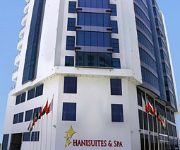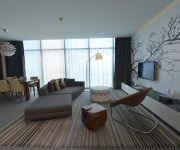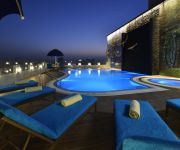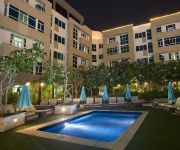Facts and Data
Webpages:
Official Unesco Page
Basis Data:
Unesco World heritage since: 2005
Size of heritage: 32 ha
- Buffer zone: 1,238 ha
Coordinates:
Longitude: 50,522°
Latitude: 26,233°
Summary
Qal’at al-Bahrain is a typical tell – an artificial mound created by many successive layers of human occupation. The strata of the 300 × 600 m tell testify to continuous human presence from about 2300 BC to the 16th century AD. About 25% of the site has been excavated, revealing structures of different types: residential, public, commercial, religious and military. They testify to the importance of the site, a trading port, over the centuries. On the top of the 12 m mound there is the impressive Portuguese fort, which gave the whole site its name, qal’a (fort). The site was the capital of the Dilmun, one of the most important ancient civilizations of the region. It contains the richest remains inventoried of this civilization, which was hitherto only known from written Sumerian references.
Location on Map
Show bigger map on Openstreetmap
Qal’at al-Bahrain – Ancient Harbour and Capital of Dilmun
Qal’at al-Bahrain, located in the Northern Region of Bahrain, is a UNESCO World Heritage site that holds immense historical and cultural significance. This ancient harbour and capital of Dilmun has a rich history dating back over 4,000 years, making it one of the most important archaeological sites in the Arabian Gulf region.
History
The history of Qal’at al-Bahrain can be traced back to the Dilmun civilization, which thrived from around 2,000 BCE to 300 BCE. Dilmun was a major trading hub, connecting Mesopotamia (modern-day Iraq) with the Indus Valley (modern-day Pakistan and India). The site served as the capital of Dilmun and played a crucial role in the trade of goods such as copper, pearls, and textiles.
Over the centuries, Qal’at al-Bahrain witnessed the rise and fall of various civilizations, including the Assyrians, Babylonians, and Persians. It also served as a military stronghold during the Islamic period. The site's strategic location at the heart of the Arabian Gulf made it a coveted prize for many empires throughout history.
Current State
Today, Qal’at al-Bahrain stands as a testament to the rich cultural heritage of the region. The site covers an area of approximately 16 hectares and consists of several archaeological layers, including a tell (artificial mound) and the remains of a Portuguese fort built in the 16th century.
The most prominent feature of Qal’at al-Bahrain is the ancient fort, which dates back to the 14th century CE. The fort was built on the ruins of previous structures, including a Dilmun temple. The fort's strategic location allowed it to control maritime trade routes and protect the capital from invasions.
Visitors to Qal’at al-Bahrain can explore the fort's well-preserved walls, towers, and gates, which offer a glimpse into the architectural prowess of the past. The site also houses a museum that showcases a wide range of artifacts discovered during excavations, including pottery, jewelry, and tools. These artifacts provide valuable insights into the daily life, trade, and religious practices of the Dilmun civilization.
Qal’at al-Bahrain has been meticulously restored and preserved by the Bahraini authorities, ensuring that future generations can appreciate and learn from its historical significance. The site's inclusion on the UNESCO World Heritage list in 2005 further highlights its importance on a global scale.
As a UNESCO World Heritage site, Qal’at al-Bahrain attracts visitors from around the world who are eager to explore its ancient ruins and immerse themselves in the rich history of the region. The site serves as a reminder of Bahrain's cultural heritage and its role as a crossroads of civilizations throughout the ages.
In conclusion, Qal’at al-Bahrain – Ancient Harbour and Capital of Dilmun is a remarkable UNESCO World Heritage site that offers a glimpse into the ancient history of Bahrain and the Arabian Gulf region. Its well-preserved fort and archaeological remains provide a fascinating insight into the trade, culture, and architecture of the Dilmun civilization, making it a must-visit destination for history enthusiasts and cultural explorers.
Hotels and places to stay
Hani Suites And Spa
RAMEE GRAND HOTEL AND SPA
The Ritz-Carlton Bahrain
Hani Royal Hotel
Swiss-Belhotel Seef Bahrain
Asdal Gulf Inn
ELITE SEEF RESIDENCE AND HOTEL
Mercure Grand Hotel Seef / All Suites
ibis Seef Manama
S HOTEL BAHRAIN
Videos from the area
Videos provided by Youtube are under the copyright of their owners.

















